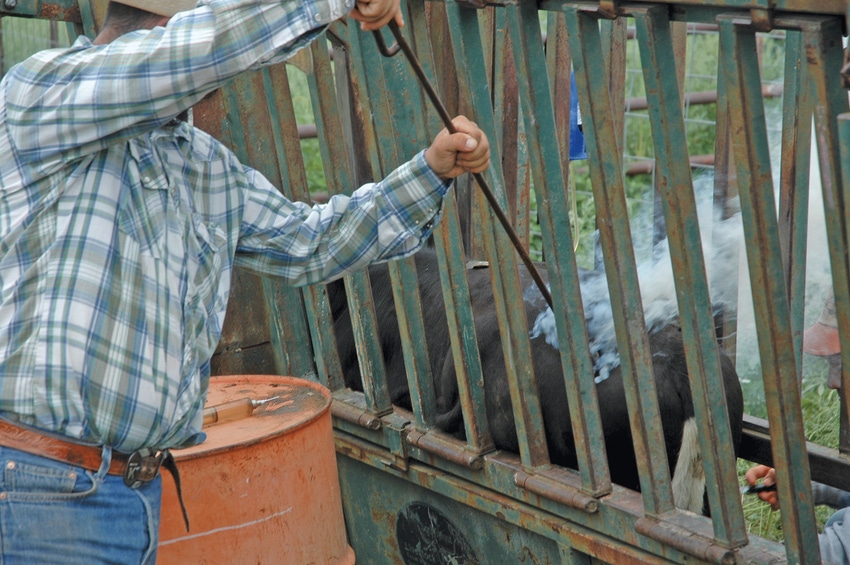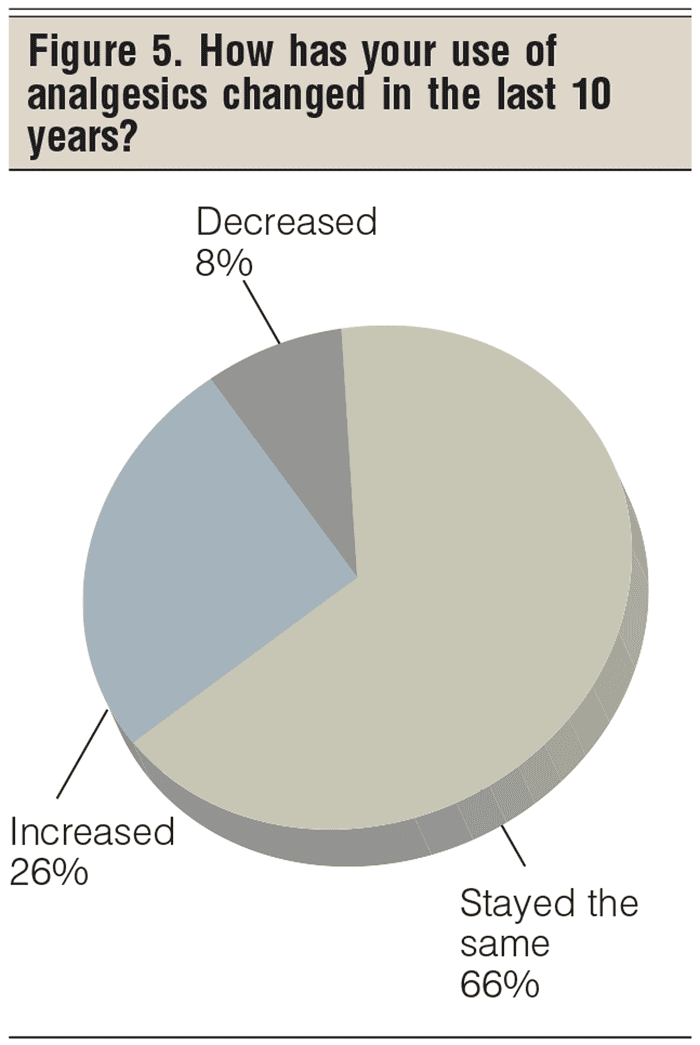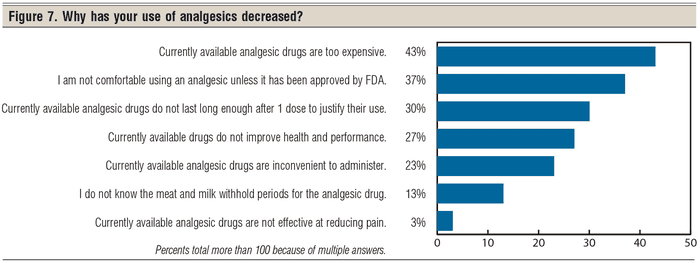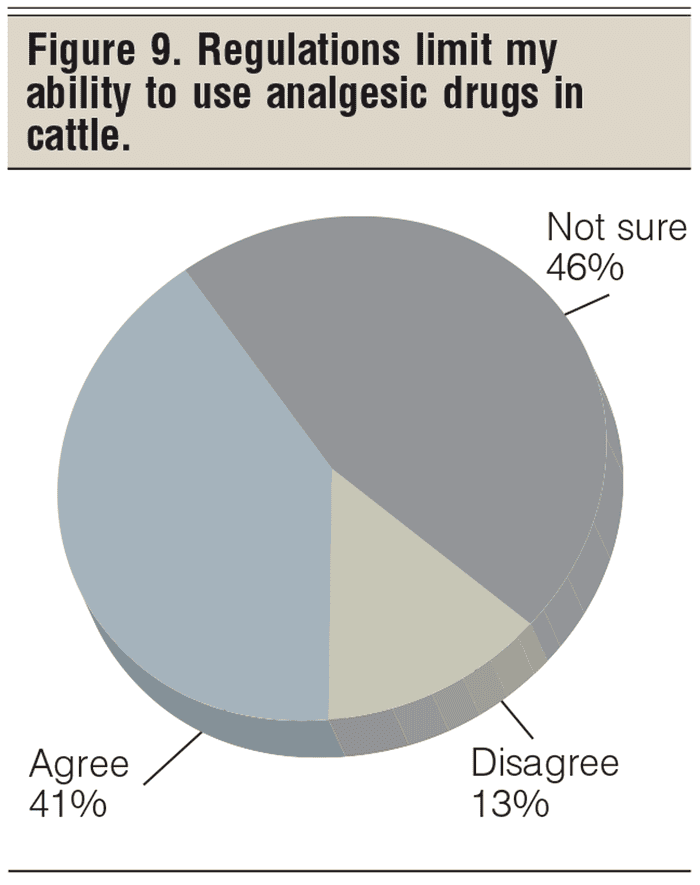Producer attitudes improve toward pain mitigation in cattle
Pain management in cattle is becoming more accepted by beef producers and veterinarians.
November 5, 2018

By Elizabeth Johnstone
In the cattle industry, recognizing and treating cattle pain is an important aspect of good animal husbandry. In the past decade, cattle producers have demonstrated a mounting interest in the availability of affordable and effective methods for implementing pain management in their operations.
However, in the United States there is currently only one drug approved by the Food and Drug Administration (FDA) for alleviating pain specifically associated with foot rot in cattle. Therefore, ranchers, farmers and veterinarians have limited pain management options from both financial and practical perspectives.
From 2015 to 2017, the number of inquiries for suggested meat withhold periods following extra-label use of pain relief drugs in beef cattle made up 28% of all the calls received by the Food Animal Residue Avoidance Databank (FARAD). One example of an analgesic drug used in an extra-label manner is meloxicam, an effective but unapproved nonsteroidal anti-inflammatory drug (NSAID) used to control pain in cattle.
In the absence of drugs approved by FDA to alleviate pain during and following painful procedures such as dehorning and castration, livestock producers rely on consultation with their herd veterinarian and the Animal Medicinal Drug Use Clarification Act (AMDUCA) to provide a framework for extra-label drug use. In light of this, understanding cattle producers’ current attitudes toward pain management, the drugs that producers use or would like to see available for use, and the issues producers are facing in implementing pain management on their U.S. operations is important to guide future progress in alleviating pain in beef cattle.

Throughout the survey, producers indicated that not only do they recognize that some management practices are painful to cattle, but that they also have a sincere interest in finding practical, affordable ways of minimizing pain. Of the beef producers who responded, 44.3% indicated they currently use pain management in their cattle operation, either local or systemic analgesia (Figure 1).
Moreover, when asked whether or not cattle benefit from receiving analgesic drugs as part of their treatment, 67% of beef producer respondents agreed with this statement, while only 4% disagreed (Figure 2). When asked if cattle recover faster when given an analgesic drug, 53% of beef producer respondents believed this to be true, while only 7% did not (Figure 3).
However, for both statements, a significant portion of respondents indicated they were unsure. Many factors undoubtedly contribute to how beef producers feel about the benefits of pain management. Increased efforts by herd veterinarians knowledgeable about pain management strategies may be needed to help producers feel more confident in analgesic drug use.

However, these concerns may largely be a result of a lack of information regarding drug options and administration procedures to avoid these complications. Education provided by industry stakeholders and veterinarians on the benefits of pain management from both animal welfare and productivity standpoints, as well as the general ease of drug application, may be necessary to resolve this uncertainty.
The cost of pain management drugs appears to be a significant concern for cattle producers. When asked if they believed that the benefits of analgesia outweigh the cost of the analgesia, 34% of beef producer respondents agreed with this statement while 56% of beef producers were unsure (Figure 4).
Once again, this identifies an opportunity for communication and discussion regarding the benefits of analgesia including the associated costs and/or associated savings.

When further asked why their use had increased, the most common responses were that beef producers felt a change in both producer and veterinarian attitudes toward pain management, there was a marked change in their operation protocols, they noticed improved health and performance with pain management, and they felt a change in their perceptions of pain in cattle (Figure 6).
The attitudes that have contributed to an increase in pain management in cattle demonstrate the desire of producers to continually seek improvements to the routine practices of their operations.
While a change in producer attitudes toward pain management strategies were seen in the results of this survey, continued focus is needed to address the affordability and availability of pain mitigation for beef operations. Fifty-one percent of producers indicated they would like their cattle to receive analgesia, but the cost of the analgesia is a major issue (Figure 7).
When more than half of producer respondents indicate that the cost of drugs is preventing them from improving the welfare of their animals and potential production outcomes, it cannot be ignored that, if sustainable improvements are to be made in the management of pain in food animals, the affordability of pain management strategies will need to be considered (Figure 8).
In addition, when asked if regulations, such as those by the FDA, limited producer ability to use analgesic drugs in cattle, 41% of beef producers agreed (Figure 9).
Based on these findings, the lack of available pain control products approved for use in cattle remains a significant impediment to the widespread adoption of pain mitigation protocols in the beef industry. Extra-label drug use can often be an unpopular option for both producers and veterinarians concerned with observing appropriate withdrawal periods for unapproved products and mitigating residue risks.

The results of this survey highlight the urgent need for approved and affordable analgesic drugs for use in beef production systems. These data should incentivize the pharmaceutical industry to work with federal regulators to bring these products to market.
The results of this survey confirm that beef producers recognize that some management practices in cattle are painful, and that they have a sincere interest in finding practical and affordable ways to minimize pain in the livestock under their care. It is also evident from the results of this survey that improvements in education on animal pain and pain management strategies must be made more readily available to cattle producers.
Finally, the survey found that the lack of approved analgesic drugs and cost remains an obstacle to the routine use of pain relief drugs in the beef industry.
Johnstone is pursuing a degree in veterinary medicine and a master’s degree in livestock behavior and welfare at Colorado State University. The results of this survey served as part of her master’s degree thesis.
You May Also Like



